Let’s talk about one of the most ancient and useful First Aid herbs we find in nature–yarrow! In today’s post, you’ll learn all about how to use yarrow as a First Aid remedy.
Be sure to stay tuned for Part 2 of Using Yarrow as a Home Remedy as we talk about how to use yarrow flowers!
This page may contain affiliate links, which means if you purchase through my links I get a small commission, but it doesn’t cost you anything extra. Thank you for supporting my blog!
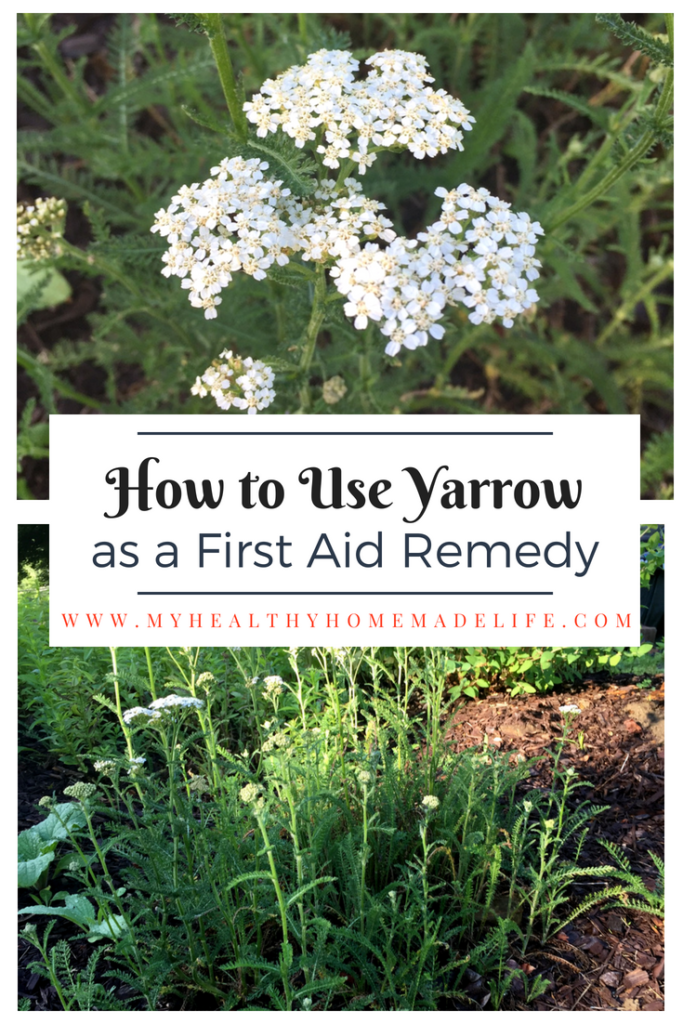
Getting to Know Yarrow
I was first introduced to yarrow several years ago when I was given a single plant started from seed. For several years my yarrow made happy company with some red bee balm and filled a nice little spot in my flower garden. It gradually filled out and one plant became several but without being a nuisance like mint planted in the wrong spot (oh yes, I’ve done that!)
It was only after I started studying herbalism that I began to realize how absolutely amazing and useful yarrow is! In fact, because it is so easy to find (it grows all over Europe, Asia, and North American and in various climates and altitudes,) knowing a bit about how to use yarrow could come in very handy should you ever find yourself in need of First Aid.
Yarrow is one of the most ancient and useful First Aid remedies we find in nature.
You may have seen some of the many varieties of yarrow grown for both their color and beauty while shopping for plants. You can find yarrow in various shades of pink, yellow, orange and white, but be aware, they aren’t all used interchangeably.
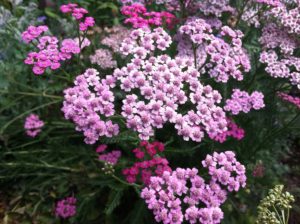
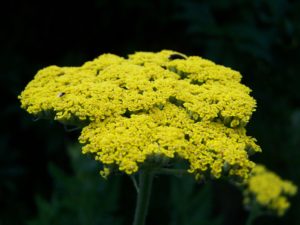
While some of these beautiful cultivars may be medicinal, most herbalists use the common white varieties, Achillea millefolium and Achillea lanulosa, for medicine.
You can find Achillea millefolium and Achillea lanulosa growing wild in open pastures or meadows, along roadsides and disturbed areas or you can grow it from seed, get some root divisions from a friend or purchase the plant at a garden center or nursery.
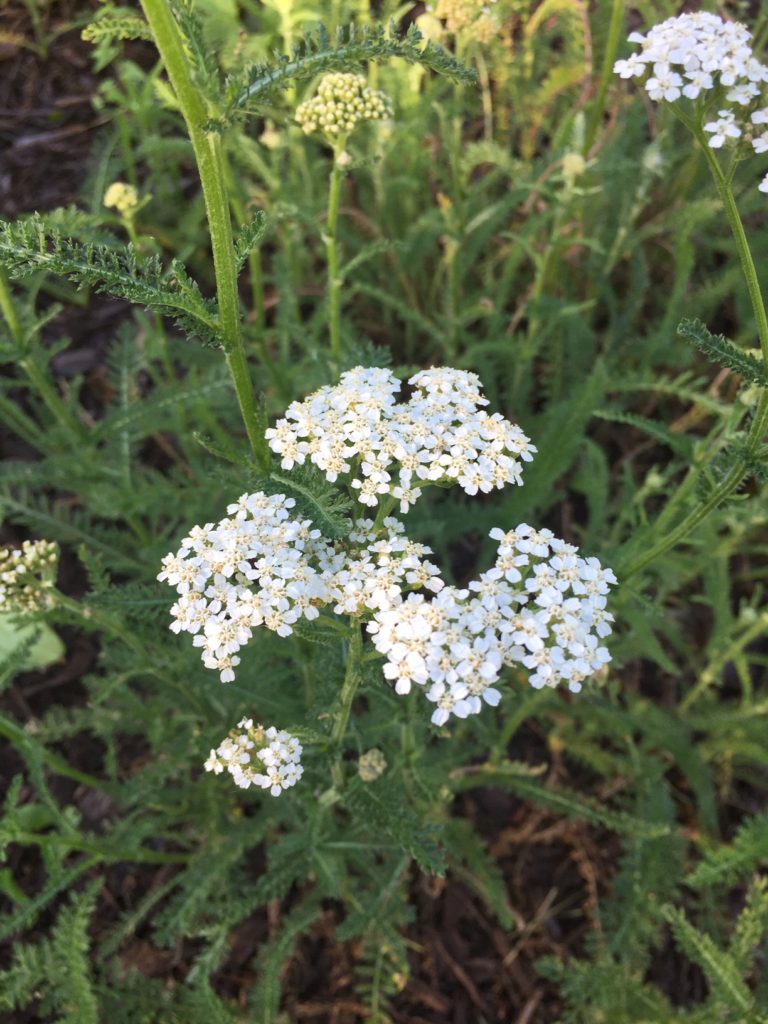
How to Use Yarrow as a First Aid Remedy
Yarrow For Bleeding
Should you ever find yourself in a situation where someone has a wound or a nosebleed that will not stop bleeding, think of yarrow.
Yarrow is called the “master of the blood” by Matthew Wood which I think is a good way to remember it!
Here, Herbalist Matthew Wood explains how yarrow works to stop bleeding.
Through numerous devices – clotting, unclotting, neurovascular control, flavonoids, etc. – it {yarrow} regulates the flow of blood to and from the surface, in and out of the capillaries and venules, thickening and thinning. Through this it cures all manner of wounds, bruises, hemorrhaging, and clotting.
Yarrow works quickly to stop bleeding, usually in a matter of minutes. For this reason alone, you might think about planting yarrow in a pot or in your yard. Even if you don’t have the space or the inclination to grow it, you can still use the dried herb to stop bleeding.
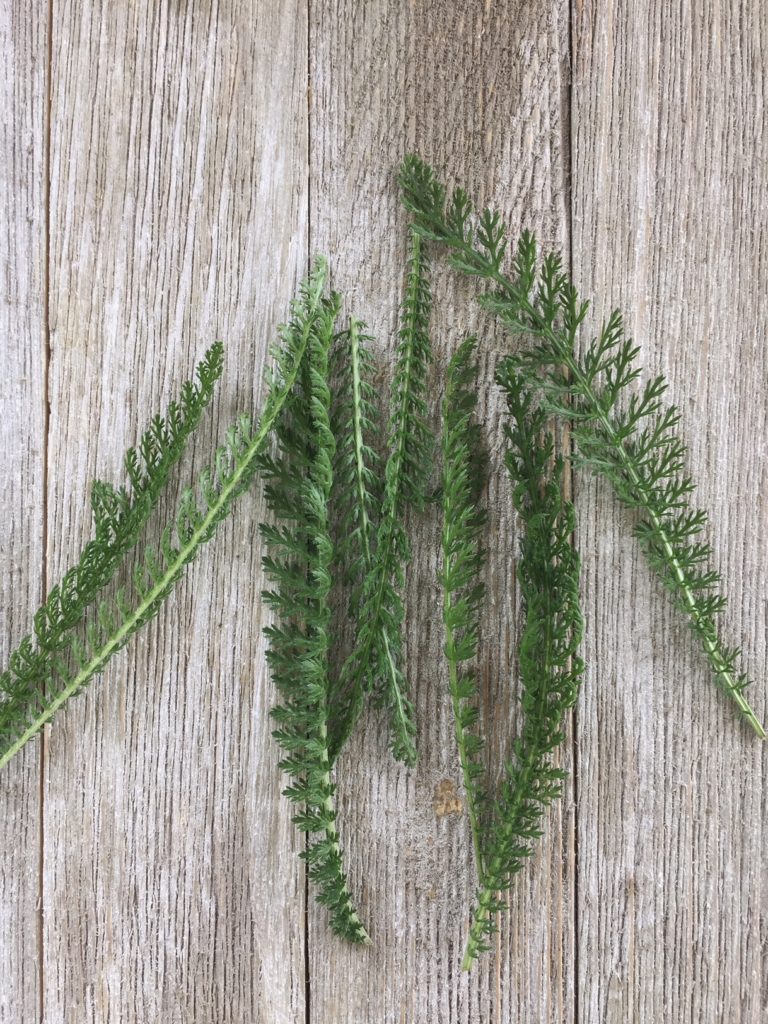
Typically, only the yarrow leaves are used to stop bleeding (we’ll talk about how to use the flowers next time) and they can be used a couple of different ways:
-
Fresh Poultice. A poultice is simply ground up plant material applied to a wound. In an emergency situation, have the individual chew some fresh yarrow leaves and apply evenly to the wound (this is known as a spit poultice.) Cover the plant material with a clean cloth and apply pressure. Alternatively, you could chop, puree, blend or use a mortar and pestle to make a pulp or paste to apply to the wound. As a side note, chewing or chopping is necessary for the yarrow to release it’s natural, healing juices. Simply applying whole yarrow leaves will not be as beneficial.
-
Dried Poultice. Although fresh herbs are preferred, a poultice made with dried or powdered yarrow can also be effective. Simply mix the dried yarrow with a little hot water to make a paste. Apply to the wound (or to a clean bandage placed over the wound) and apply pressure. If you already have dried yarrow leaves, there is no need to purchase powdered yarrow. It is easy to powder with a mortar and pestle or an herb grinder.
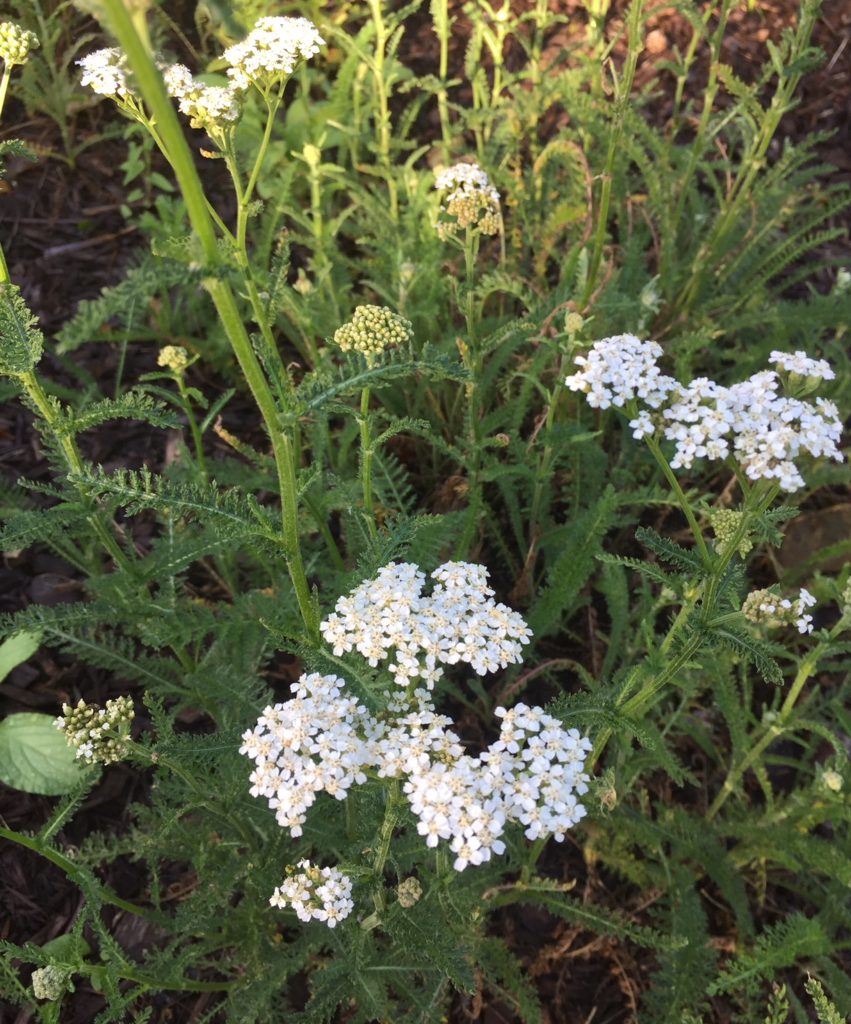
Yarrow for Preventing Infection & Wound Healing
Not only can yarrow stop bleeding, but it also excels at preventing infection and healing wounds.
Yarrow is antibacterial, anti-inflammatory and astringent which makes it ideal for reducing both the pain and swelling in wounds and preventing infection.
Here are two easy methods of using yarrow:
Yarrow Soak: One simple yet effective way to use yarrow for wound healing and preventing infection is to brew a strong cup of yarrow tea using the fresh or dried leaves, dilute it with some warm water and soak the wound (or add it to your bath water. ) Continue to do this several times a day until the wound begins to heal.
Yarrow Salve. Another great way to use yarrow for wounds is to make a homemade herbal salve (or purchase one. Etsy is often a great place for this.) Make a simple yarrow leaf salve or combine the yarrow with other wound-healing herbs like I did in this Backyard Herbal Healing Salve.
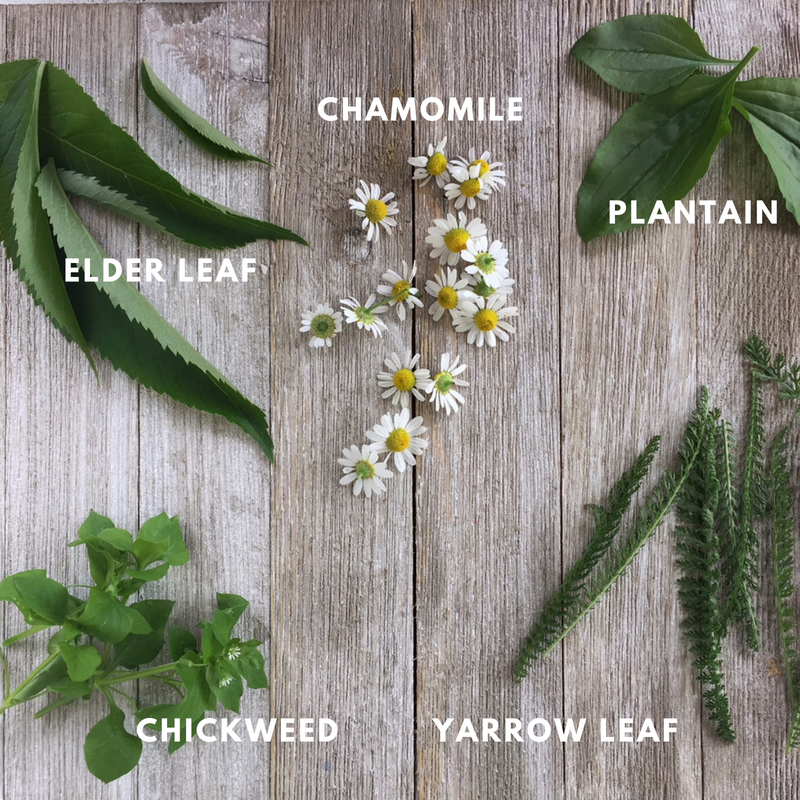
How to Use Yarrow as a First Aid Remedy
Jennifer Prentice @ My Healthy Homemade Life
Yields 8 oz
Backyard Herbal Healing SalveAn all purpose herbal salve for cuts, wounds, rashes, scraps, bruises, minor burns, insect bites, eczema, and acne.
5 based on 4 review(s)
Ingredients
- 1 cup wilted and chopped backyard herbs such as chickweed, plantain , elder leaves, yarrow leaves, dandelion flowers ,chamomile or calendula.
- 1 cup olive or coconut oil or a mixture of the two oils
- 1/4 cup (1 oz) beeswax
- 20 drops frankincense essential oil or Peru Balsam
- 10 drops lavender essential oil
Instructions
- If working with fresh herbs, lay your herbs out flat to dry out slightly (for at least overnight.)
- Chop your herbs either by hand or in a food processor.
- Using rough, equal amounts of each herb, measure out 1 cup of the chopped herbs and place in a clean, dry glass jar with lid.
- Add the carrier oil and shake to combine. You can expect the herbs to expand a bit over the next day or so.
- Check your jar over the first couple of days to ensure all the herbs are completely covered with the oil as they expand. Add more oil if needed.
- Allow your oil mixture to infuse for 2 weeks in a warm, sunny spot or infuse using one of the quick methods (see recipe notes.)
- Strain your oil using a fine mesh strainer or cheese cloth/muslin.
- In a double boiler or using a heat safe glass measuring cup in a pan of water, heat 1 cup of the prepared oil and the beeswax until the beeswax is melted. Allow to cool slightly before mixing in the essential oils.
- Pour immediately into tins or small glass jars. Label and date your salve.
Notes
If you don’t want to wait 2 weeks for your infused oil, try one of these quick methods:
Quick Infusion (Double-Boiler Method):
In a double boiler or a heat safe measuring cup in a pan of water, simmer the oil and herbs over very low heat. Simmer gently for 30 to 60 minutes or longer, keeping the oil between 95-110 degrees. As Rosemary Gladstar likes to say, “the lower the heat and the longer the infusion, the better the oil.”
Quick Infusion Method 2# (Dehydrator):
This is one of my favorite methods! If you have an Excalibur (or similar type) dehydrator with a temperature control, you can infuse your herbs in it.
Add all of your herbs and oil to a glass jar. Shake to combine.
Remove enough of the trays in your dehydrator so that your glass jar with infused herbs sits in the bottom. Set the temperature between 95-110 degrees and leave it for 2 days or longer, shaking it periodically.
For more great recipes like this, visit www.myhealthyhomemadelife.com
7.8.1.229https://www.myhealthyhomemadelife.com/how-to-use-yarrow-as-a-first-aid-remedy/
Jennifer Prentice @ My Healthy Homemade Life
Yields 8 oz
An all purpose herbal salve for cuts, wounds, rashes, scraps, bruises, minor burns, insect bites, eczema, and acne.
5 based on 4 review(s)
Ingredients
- 1 cup wilted and chopped backyard herbs such as chickweed, plantain , elder leaves, yarrow leaves, dandelion flowers ,chamomile or calendula.
- 1 cup olive or coconut oil or a mixture of the two oils
- 1/4 cup (1 oz) beeswax
- 20 drops frankincense essential oil or Peru Balsam
- 10 drops lavender essential oil
Instructions
- If working with fresh herbs, lay your herbs out flat to dry out slightly (for at least overnight.)
- Chop your herbs either by hand or in a food processor.
- Using rough, equal amounts of each herb, measure out 1 cup of the chopped herbs and place in a clean, dry glass jar with lid.
- Add the carrier oil and shake to combine. You can expect the herbs to expand a bit over the next day or so.
- Check your jar over the first couple of days to ensure all the herbs are completely covered with the oil as they expand. Add more oil if needed.
- Allow your oil mixture to infuse for 2 weeks in a warm, sunny spot or infuse using one of the quick methods (see recipe notes.)
- Strain your oil using a fine mesh strainer or cheese cloth/muslin.
- In a double boiler or using a heat safe glass measuring cup in a pan of water, heat 1 cup of the prepared oil and the beeswax until the beeswax is melted. Allow to cool slightly before mixing in the essential oils.
- Pour immediately into tins or small glass jars. Label and date your salve.
Notes
If you don’t want to wait 2 weeks for your infused oil, try one of these quick methods:
Quick Infusion (Double-Boiler Method):
In a double boiler or a heat safe measuring cup in a pan of water, simmer the oil and herbs over very low heat. Simmer gently for 30 to 60 minutes or longer, keeping the oil between 95-110 degrees. As Rosemary Gladstar likes to say, “the lower the heat and the longer the infusion, the better the oil.”
Quick Infusion Method 2# (Dehydrator):
This is one of my favorite methods! If you have an Excalibur (or similar type) dehydrator with a temperature control, you can infuse your herbs in it.
Add all of your herbs and oil to a glass jar. Shake to combine.
Remove enough of the trays in your dehydrator so that your glass jar with infused herbs sits in the bottom. Set the temperature between 95-110 degrees and leave it for 2 days or longer, shaking it periodically.
For more great recipes like this, visit www.myhealthyhomemadelife.com
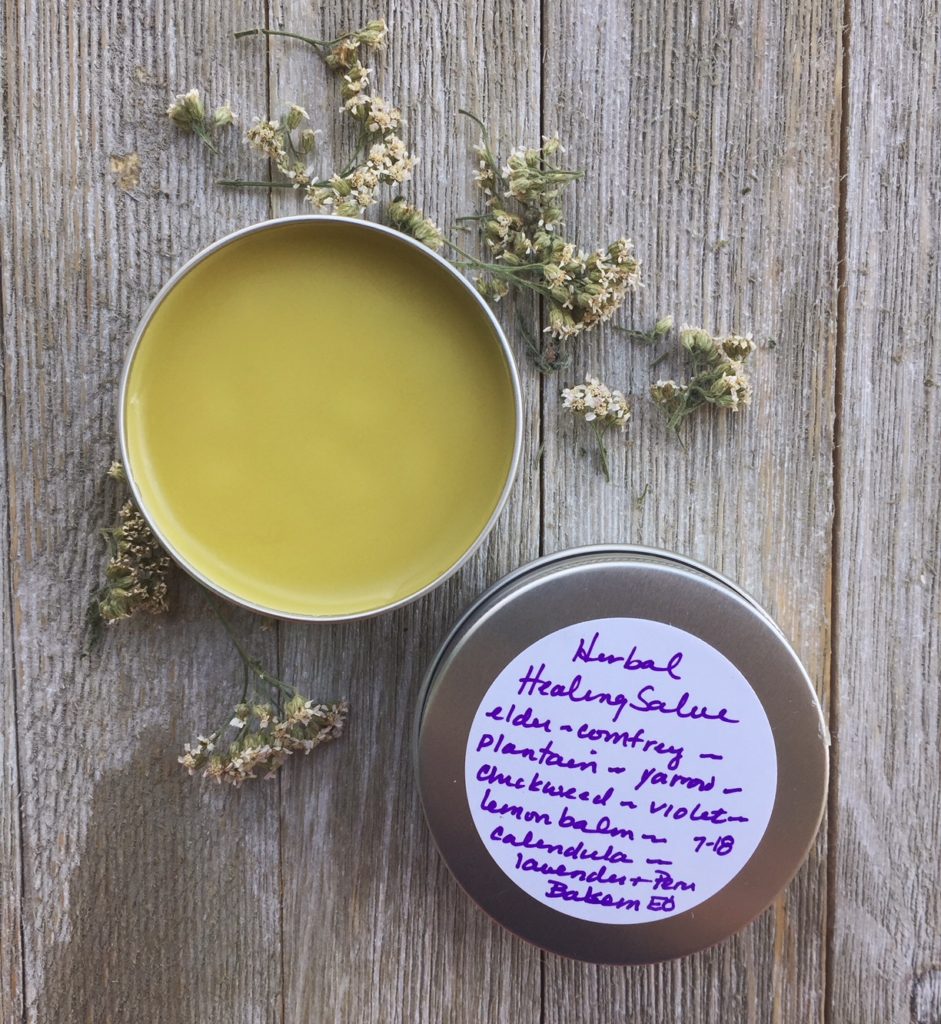
How will you use yarrow for First Aid? Will you make a tea, poultice or a salve? Please let me know by leaving a comment below or sharing a comment or picture on my Facebook Page or on Instagram .
I love hearing your feedback!
Stay tuned for Part 2 of Using Yarrow as a Home Remedy as we talk about how to use yarrow flowers!
Subscribe Here
References:
The Earthwise Herbal by Matthew Wood. ( 2008)
Herb Mentor by Learning Herbs
Chestnut School of Herbal Medicine. Foraging Course. (2018)
This site is for educational purposes only. It does not provide medical advice. Information found on myhealthyhomemadelife.com is meant to motivate you to make your own health care and dietary decisions based upon your own research and in partnership with your health care provider.


 Save Recipe
Save Recipe


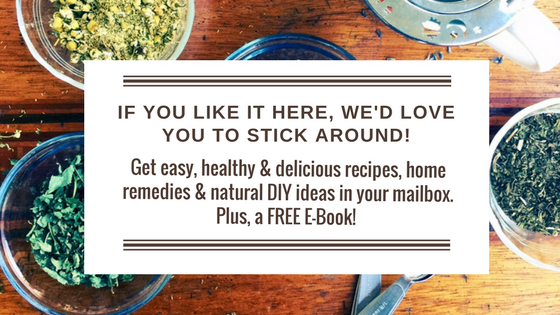

25 Comments